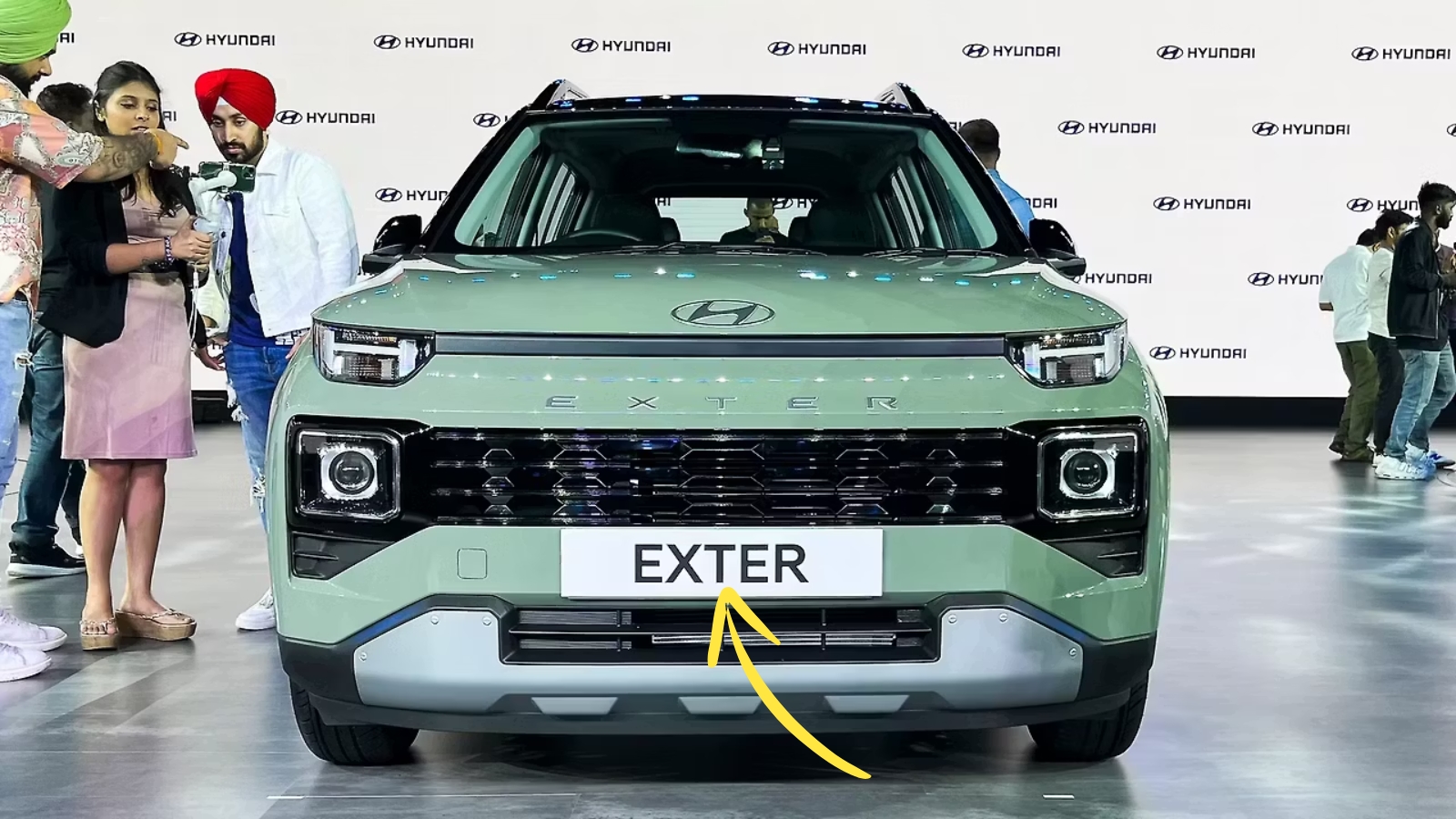Hyundai Exter: When Hyundai entered the micro-SUV battlefield with the Exter in 2023, they weren’t just launching another compact vehicle – they were making a statement about how premium features could coexist with affordable pricing. This wasn’t a hasty response to Tata Punch’s success; it was a carefully orchestrated entry that leveraged Hyundai’s global expertise in creating vehicles that punch above their weight class. The Exter represents everything Hyundai has learned about Indian consumer preferences, wrapped in a package that challenges assumptions about what budget-conscious buyers actually want. But in a segment already crowded with capable competitors, can the Exter’s premium approach really justify choosing Korean engineering over proven Indian alternatives?
Hyundai Exter Design Language: Global Sophistication Meets Local Sensibilities
The Exter’s design story begins with Hyundai’s parametric dynamics philosophy, adapted specifically for the compact SUV segment. Unlike competitors who rely heavily on plastic cladding to create SUV presence, Hyundai approached the challenge through sophisticated surface modeling and proportion management. The result is a vehicle that looks substantial without appearing bulky, modern without seeming futuristic.
The front fascia immediately establishes the Exter’s premium credentials through its cascading grille design and distinctive LED lighting signature. The headlamp configuration avoids the split-setup trend, instead integrating everything into cohesive units that provide excellent illumination while maintaining visual elegance. The bumper design incorporates functional air dams and fog lamp housings that enhance both aesthetics and aerodynamics.
What sets the Exter apart is the attention to detail in surface development. Character lines flow naturally across the body panels, creating visual interest without appearing busy or overdone. The wheel arch treatment strikes a perfect balance between ruggedness and sophistication, while the side body cladding feels integrated rather than added as an afterthought.
The rear design showcases perhaps the most successful aspect of the Exter’s styling. The connected tail lamp design creates visual width while providing distinctive nighttime recognition. The rear bumper incorporates functional elements like reflectors and number plate housing seamlessly into the overall design theme.
Color palette choices reflect Hyundai’s understanding of diverse buyer preferences, with vibrant options like Cosmic Blue and Fiery Red appealing to younger demographics, while conservative shades like Atlas White and Abyss Black satisfy traditional tastes.
Interior Excellence: Premium Features at Accessible Prices
Step inside the Exter, and you immediately notice how Hyundai has prioritized perceived quality over flashy gimmicks. The dashboard design creates visual sophistication through careful material selection and surface treatment that feels more expensive than the price point suggests. The dual-tone interior theme adds visual interest while making the cabin feel more spacious than external dimensions indicate.
Technology integration represents one of the Exter’s strongest selling points. The 8-inch touchscreen infotainment system operates smoothly and supports both Android Auto and Apple CarPlay with wireless connectivity options. The interface design feels intuitive, with clear graphics and responsive touch controls that work reliably even in challenging lighting conditions.
Seating comfort exceeds expectations for this segment. The front seats provide adequate support for extended driving while offering height adjustment that helps different drivers find comfortable positions. The fabric upholstery quality feels durable and premium, while the seat cushioning strikes a good balance between firmness and comfort.
Rear seat space genuinely impresses, with legroom that accommodates adults comfortably for urban commutes and weekend trips. The rear seat cushioning provides adequate support, while the upright seating position maximizes headroom without creating a cramped atmosphere.
Storage solutions throughout the cabin demonstrate thoughtful design rather than maximum quantity. Cup holders are positioned logically, door pockets can accommodate water bottles securely, and the glove compartment provides adequate space for essential items.
Performance Philosophy: Balanced Approach to Power and Efficiency
The Exter’s powertrain strategy reflects Hyundai’s conservative approach to engine development, prioritizing reliability and efficiency over headline-grabbing power figures. The 1.2-liter naturally aspirated petrol engine produces 83 horsepower, adequate for urban driving and highway cruising without feeling underpowered in most situations.
Engine refinement stands out as a particular strength. The powerplant operates smoothly across the rev range, with minimal vibration reaching the cabin even during spirited driving. The engine response feels linear and predictable, characteristics that build driver confidence rather than providing thrills.
The manual transmission operates with precision that makes gear changes satisfying rather than laborious. Gate definition is excellent, and the clutch action feels well-calibrated for stop-and-go traffic. The AMT option provides acceptable automatic convenience without the refinement of traditional torque converter units, but serves its purpose for buyers prioritizing ease of use.
Real-world fuel efficiency consistently achieves 18-20 kilometers per liter under mixed driving conditions, making the Exter economical enough for budget-conscious buyers while providing adequate performance for daily needs.
Hyundai Exter Market Strategy: Premium Positioning in Value Segment
Hyundai positioned the Exter strategically above basic micro-SUVs while remaining accessible compared to compact SUVs. Starting around ₹6.13 lakhs and extending to ₹10.43 lakhs for top variants, the pricing reflects the premium features and build quality that differentiate it from purely value-focused competitors.
This positioning targets buyers who want micro-SUV practicality but expect the refinement and features typically associated with larger, more expensive vehicles.

